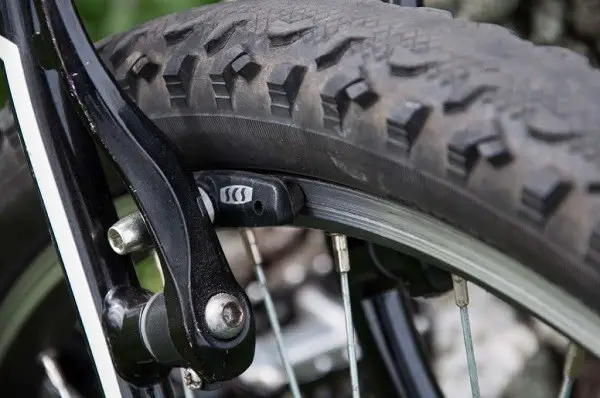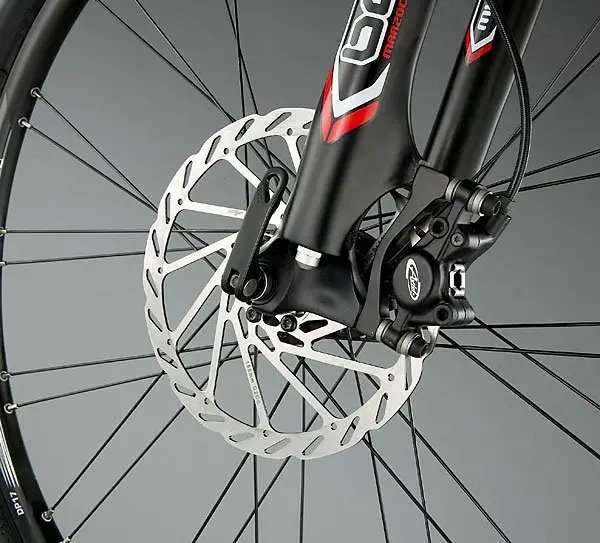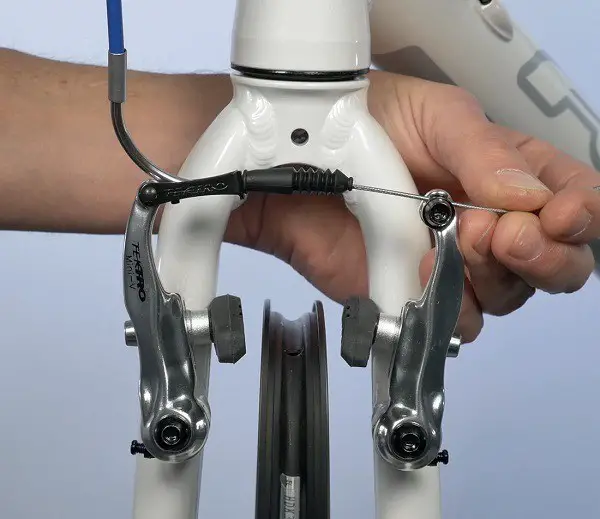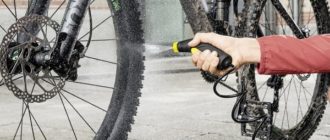The first bike is like a first date. You treat it carefully, dust it off, don’t demand anything, and are as wary as possible of the slightest suspicious sound. It is not uncommon to hear the squeaky brakes on a bicycle. Many people immediately conclude that the mechanism is out of order or the breakdown is not long in coming.
Let’s understand the reasons why brakes can make specific sounds when working, identify the nature of their origin, as well as figure out what to do in such situations.
Why brakes squeak when braking
There may be several reasons for the occurrence of sonic ugliness – they are largely similar, but they must be considered separately, depending on the type of braking system.
Rim brakes
The key mechanism that stops the bicycle is the rim, to which two metal levers with brake pads are pressed. The force exerted by the cyclist creates friction, which slows the rotation of the wheel and subsequently stops the vehicle.
There are two types of brake pads that can be used in this system:
- Cartridge.
- Disposable.
When the latter wear out, the consumable element must be completely replaced. Cartridge pads cost an order of magnitude more expensive, but in the future it is enough to change only the rubber element.
The specific squeak when the brakes work can appear for the following reasons:
- Stiff pads. Too hard rubber quite often leads to an unpleasant sound when braking. Soft material does not have this disadvantage, but is more susceptible to wear – for this reason, frequent replacement of the element is required.
- Condition of the rim. Sometimes the squeaking in the brakes is the result of a deformed or damaged rim. Scratches, abrasions, chips, or heavy soiling can all contribute to the squealing sound.
- Location of the pads. The unpleasant sound of the brakes can sometimes be provoked by improper installation of the entire system itself. If the brakes are installed with a misalignment relative to the rim, there is an excessive load at the point of first contact. This is fraught with uneven wear and complete erosion of the rubber.
- The condition of the mechanical elements. Often it is not the brake pads that squeak, but the mechanism itself. In this case, it is recommended to carefully inspect each element of the brake system for the presence of rusted or worn parts.
Moisture is another factor that can cause squeaky brakes. With frequent riding in the rain or in puddles, the pads get wet, which provokes a specific sound when friction occurs.
Disc brakes
This type of brakes involves docking the pads with a steel disc, which is attached to the hub of the wheel. The mechanism is more compact in size, as the thickness of the disc is much less than the size of the rim. The following types of pads can be used in such a system:
- synthetic;
- metalized;
- organic.
The latter material is soft and quick to wear, but it negates the likelihood of squeaking in the brakes.
The most common reasons why disc brakes on a bicycle can squeak:
- Metallized pads. They can make distinctive noises when wet or forcefully applied.
- The brakes are misaligned with the disc. This can also cause rapid and uneven wear.
- Damaged or worn brake discs. With intensive use (especially with hard pads), there is considerable wear and tear on the mechanisms. It is characterized by a noticeable groove in the area of contact of the pads, distortion of the surface and the formation of “waves” on it.
The last cause causes not only the appearance of squeak, but also a decrease in braking power.
Prevention of brake squeaking
Most often, the unpleasant sound in the brakes occurs after replacing the old mechanism with a new one. The system needs lapping and running-in – for this it is enough to stop the bike sharply at low speed. The procedure can be repeated several times. There is nothing to be afraid of – it is useful for new parts to be in conditions of intensive use.
Professional craftsmen recommend paying more attention to the condition of the brakes. Sometimes the unpleasant sound appears due to insufficient lubrication of the elements. Periodically pump the mechanisms to facilitate the operation of the braking system.
In principle, a bicycle is an unpretentious construction. Regular cleaning, drying and lubrication of the running gear is sufficient to ensure that all its mechanisms work perfectly. Keep an eye on the condition of the pads to make timely replacement of consumable components.
How to remove the squeaky brakes on the bike – tips
First of all, you need to rule out two factors:
- Creaking when a new mechanism (in this case, a good running-in is enough).
- The appearance of an unpleasant sound when the system gets wet (wait for the brakes to dry themselves or dry by hand – you can dry the pads with a few sharp brakes, in which the material will be strongly heated and the moisture will evaporate).
If the disc and rim are free of damage and their components are cleaned of dirt, the only thing that will help here is to replace the pads with softer products.
Cleaning the disc brake
You can clean the disc with a special cleaner or with an ordinary detergent. Contamination should also be removed from the pads. To be on the safe side, they may be sanded down several times with medium grit emery paper. If scratches, warping or other more serious damage is found, the following procedure should be followed:
- After removing the locking sleeve, remove the pads.
- Unscrew the disc from the wheel.
- Remove any dirt.
- Grind the surface. The best option is to use an emery bar of the appropriate size (you can put the disc on it and perform its lapping) If an emery bar is not available, a similar paper fixed on a flat surface (a plank of wood, for example) will do.
- It is necessary to grind the disk in a circular motion until the maximum possible disappearance of scratches.
After that, you need to clean all the elements of the brake system of dust and dirt, and then assemble everything in reverse order.
Cleaning the rim
Here the algorithm is about the same: clean the elements with special agents, if deformed – grind. It is quite another matter if the rim is warped – with a strong deviation from the norm will only help to replace the element.
For grinding the rim it is better to use sandpaper of medium and fine grit. Don’t forget to remove the tube and tire beforehand.
Checking the position of the pads
The space between the pad and disc or rim should be the same on both sides. If there is any discrepancy during the inspection the position of the brake components should be corrected by loosening or tightening a screw.
Pay attention to the distance from the pad to the pressure surface – it must be equal to 3-4 mm at rest.
Advice for your riding tactics
Perfect braking is the key to safe cycling. There are special rules of braking in normal mode and in case of force majeure. By following these recommendations, you can not only reduce speed to the maximum possible value, but also prevent an emergency situation:
- Try to assess the situation on the road as fully as possible.
- Observe a speed limit.
- Having noticed an obstacle ahead, start braking in advance. This allows you to make a decision in a calmer environment.
- Do not rely solely on the front or rear brake, learn to use both mechanisms. If you suddenly clamp the front brake, you can fly out over the steering wheel. Using the rear mechanism, it is possible not to reach the necessary force and to leave a skidding.
- Take into account that driving in puddles causes the rim to get wet, which reduces the effectiveness of the brakes. At the most necessary moment the system can fail.
- Driving in rainy weather or overcoming wet areas, periodically warm up the brakes: on the move clamp and release the levers.
Pay attention to the condition of the brakes. The attentive inspection and meticulous prophylaxis at the end of one season and at the beginning of a new one is enough. It will give the chance to estimate a degree of wear of details, to grease elements and in due time to eliminate a malfunction.
It will not hurt the beginners to practice the skills of correct braking – it will prolong the service life of brakes and allow to avoid unpleasant consequences after the fall. It is better to use the rear brake for stopping on steep turns. When stopping abruptly, it is difficult to turn the steering wheel, so you should not rely on the front mechanism.
It is not superfluous to learn the rules of extreme braking. For example, after one wheel has gone skidding, it is necessary to stop the second wheel as fast as possible. If the possibility of sharp braking is minimal, it is desirable to learn to jump off the saddle.
Conclusion
Knowing the causes of squeaky braking, you will be able to detect the problem yourself and fix it as much as possible. Keep an eye on the condition of the running gears and choose one or another type of system depending on the driving style and conditions of the bike.










Well, I’m periodically once a season and consistently lubricate all the brakes on my bike, if necessary, then change, not such an expensive thing and it is clearly not worth saving on it, and can cost life)
Great post! This is an interesting and informative topic. It’s helpful to learn about the reasons why brakes squeak, especially for bike owners who are trying to diagnose and fix the issue. Thanks for sharing your knowledge!